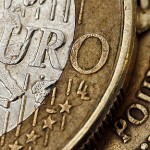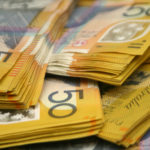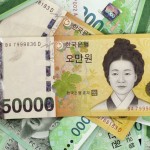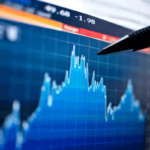Gold swung between gains and losses on Monday, pressured by a strong dollar, but remained not far off from Fridays three week high as the Peoples Bank of China decreased interest rates in a bid to boost the cooling Chinese economy. Copper rose following the rate cut but gains were capped by fears the measure might not be enough to spur a significant enough jump in economic activity that would ensure high demand for base metals. Silver, platinum and palladium were little changed.
Comex gold for delivery in December traded at $1 196.4 per troy ounce at 13:22 GMT, down 0.11% on the day. Prices ranged between $1 203.8 and $1 192.2 during the day. The precious metal rose 0.57% on Friday to $1 197.7, having hit a three-week intraday high of $1 207.6 during the day.
The People’s Bank of China lowered its one-year deposit rate by 0.25% to 2.75% on Friday, while the one-year lending rate was cut by 0.4% to 5.6%. This was the first reduction since July 2012. The central bank’s bid to jump-start the cooling Chinese economy could be extended with another rate cut, CNBC said, citing sources.
Used as a hedge against inflation, gold draws support from policy makers’ push to revive a sluggish economy using an accommodative policy.
The Chinese rate cut came shortly after ECB President Mario Draghi said that the central bank might expand its asset-purchase program to spur inflation, which has been running dangerously low, and added that strong recovery in Europe is unlikely in the coming months. Meanwhile, the Bank of Japan announced a monetary stimulus expansion in October, sending the yen to the lowest in seven years against the dollar.
Data by the US Commodity Futures Trading Commission released on November 21st showed rising bullish sentiment. Hedge funds and money managers boosted net long positions on gold futures and options by 21 634 to 60 307 in the week through November 18th. Long bets rose for the first time in four weeks, while short wagers slid to the lowest in two months.
Probably not enough
However, analysts saw little likelihood that gold would extend a sustainable rally far beyond the $1 200 level, given that the bearish factors behind the recent price slump to a 4-1/2-year low earlier in the month were still at play.
The Federal Reserve is preparing to raise interest rates in 2015 after wrapping up the Quantitative Easing program at its October 28-29 meeting. Albeit sounding caution of inflation still failing to reach a set target, FOMC members expressed optimism about the US economy’s recovery and emphasized that raising borrowing costs would depend on economic data.
The US dollar index rose to a fresh 4-1/2-year high on Monday, pressuring down gold. The December contract traded 0.06% lower at 88.350 at 13:25 GMT, having earlier risen to 88.515, the highest since June 2010. The US currency gauge surged 0.84% on Friday to 88.405, settling the week almost 1% higher.
Assets in the SPDR Gold Trust, the biggest bullion-backed ETF and a major gauge for investor sentiment toward gold, were unchanged for a third day on Friday at 720.91 tons. Holdings in the fund slid to 720.62 tons on November 13, the lowest since September 2008.
The precious metal gained some support last week as data by the IMF showed that Russia expanded its gold reserves in October by 19.7 tons, while Azerbaijan, Belarus, Kazakhstan and Mauritius also increased their gold reserves. However, Ukraine slashed its gold holdings to 840 000 ounces in October from 1.3 million a month earlier, compared to 1.36 million ounces at the end of 2013.
Weighing on the yellow metal, an opinion poll showed that support for a Swiss referendum to change the Swiss National Bank’s gold policy fell to 38% in November from 44% in October, with 47% of voters opposing the measure, while 15% were undecided.
Under the proposal, the central bank would be banned from selling its gold reserves and should back at least 20% of its assets with the metal, up from 7.8% in October. If the vote were to be positive, this would drive physical demand for the precious metal, boosting prices up. The vote will be carried out on November 30th.
Copper
Copper also shifted between daily gains and losses, driven down by the stronger greenback and by fears of faltering base metal demand from the worlds top consumer.
Comex copper for delivery in December added 0.21% to trade at $3.0380 per pound at 13:22 GMT, having shifted in a daily range of $3.0480-$3.0200. The red metal rose 0.40% on Friday to $3.0315, having touched a three-week intraday high of $3.0775.
Analysts saw the interest rate cut as evidential for the Chinese economys dim economic outlook and feared it would do little to bolster demand for metals.
“Our China economists felt that the net effect of cutting the deposit rate and raising the ceiling on the benchmark deposit rate was zero,” said for CNBC Caroline Bain, senior commodities economist at Capital Economics. “On the lending side, it will benefit large state-owned Chinese companies but is not going to make a huge difference to smaller private companies” she added.
However, the PBOC is likely to slash interest rates again soon, citing fears of falling prices that could lead to job cuts and business failures.
A preliminary private gauge showed on Thursday that China’s manufacturing sector was at the threshold between expansion and contraction in November, fueling expectations for monetary easing.
The corresponding HSBC Flash China Manufacturing PMI fell to a six-month low of 50.0 in November, compared to October’s final reading of 50.4. The output sub-index declined to a seven-month low of 49.5, entering contraction territory, compared to 50.7 in October.
Some support was drawn on Monday after data by manufacturing powerhouse Germany showed that business confidence unexpectedly grew in November for the first time in seven months after the ECB committed to boosting the Eurozones economy.
The Ifo Institute for Economic Research reported that its Business Climate Index rose to 104.7 in November from 103.2 in October, defying projections for a drop to 103.0. The Current Assessment Index rose to 110.0 from 108.4 a month earlier, while the Business Expectations gauge increased to 99.7 from 98.3 in October. However, growth within the single currency area remains sluggish, with the ECB predicting no significant growth in the short and mid-term.





